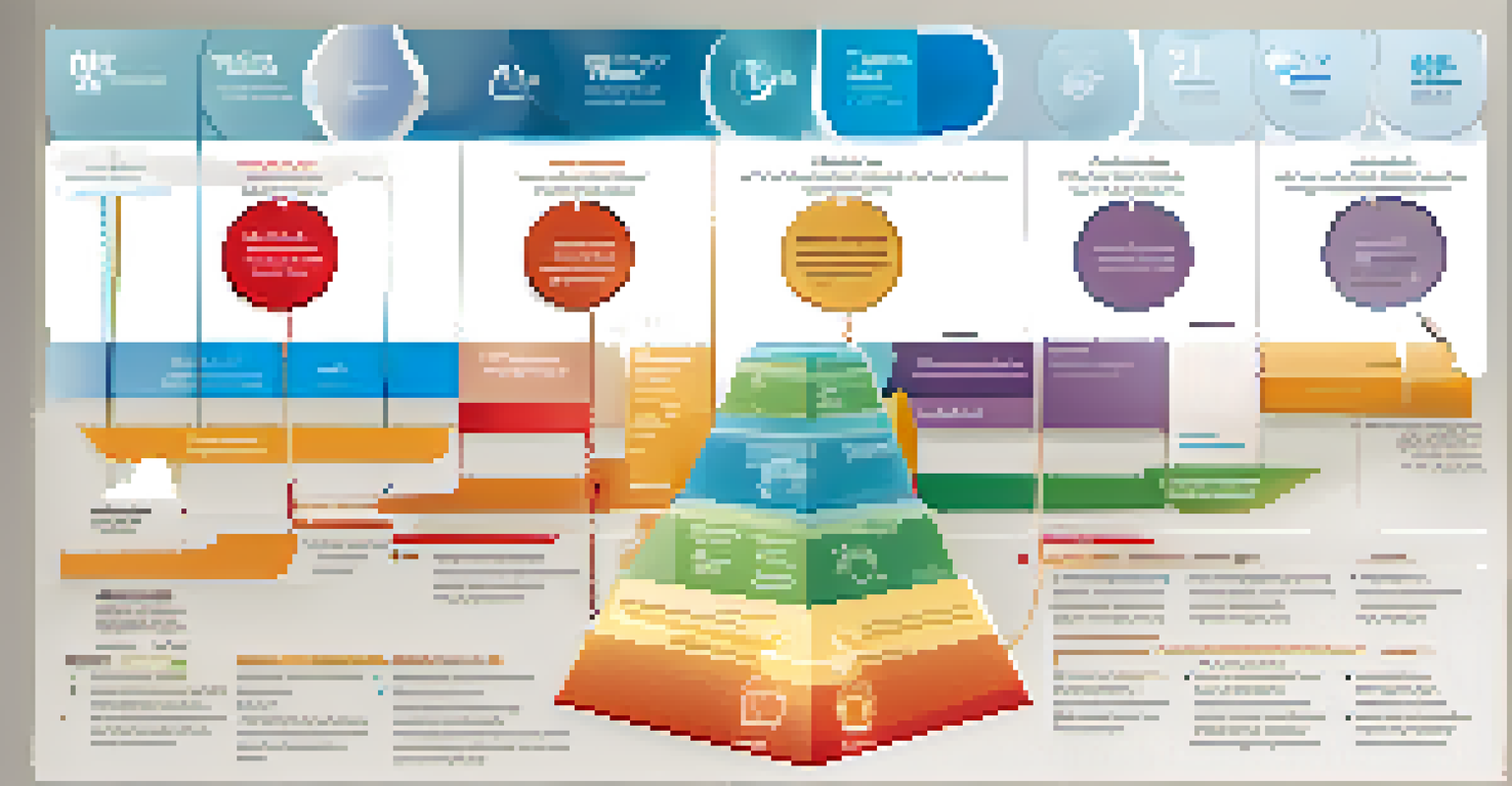Identifying Your Target Market: A Key to Startup Success

Understanding the Importance of Your Target Market
Identifying your target market is crucial for any startup. It allows you to tailor your products and marketing strategies to meet the specific needs of your ideal customers. Without a clear understanding of who you’re targeting, your efforts may be wasted on audiences that don’t resonate with your brand.
If you don't understand your customer, you don't understand your business.
Think of your target market as a compass that guides your business decisions. When you know who your customers are, you can create messaging that speaks directly to them, making your marketing efforts more effective. This focused approach not only saves you time but also maximizes your return on investment.
Additionally, understanding your target market helps you stand out in a crowded marketplace. By honing in on a specific audience, you can differentiate your offerings from competitors, making it easier for potential customers to choose you over others.
Defining Your Ideal Customer Profile
Creating an ideal customer profile (ICP) is an essential step in identifying your target market. This profile combines demographic, geographic, and psychographic information to paint a clear picture of who your customers are. For instance, you might describe your ideal customer as a 30- to 40-year-old urban professional with a passion for sustainability.

By defining your ICP, you can focus your marketing efforts and product development on features that truly matter to your audience. This targeted approach makes your business more relatable and appealing to potential customers. It’s like speaking their language and addressing their specific pain points.
Know Your Target Market
Identifying your target market is essential for tailoring products and marketing strategies to meet the specific needs of your ideal customers.
Moreover, an ICP can evolve over time as you gather more data and feedback from your customers. Continuous refinement of your profile ensures that you stay relevant and responsive to the changing needs of your market.
Conducting Market Research Effectively
Market research is a valuable tool for identifying your target market. It involves collecting data about your potential customers, competitors, and industry trends. This information helps you understand who your customers are, what they want, and how you can best satisfy their needs.
Your most unhappy customers are your greatest source of learning.
You can use various research methods, such as surveys, interviews, and focus groups, to gather insights directly from your target audience. For example, if you're launching a new product, asking potential customers for their opinions can guide your decisions and validate your ideas.
Additionally, don’t underestimate the power of online research. Tools like Google Trends and social media analytics can provide data on consumer behavior, preferences, and emerging trends, which can be invaluable when determining your target market.
Segmenting Your Audience for Better Targeting
Once you have gathered data about your potential customers, it's time to segment your audience. Audience segmentation involves dividing your broader market into smaller, more manageable groups based on shared characteristics. This allows you to tailor your marketing efforts to each segment effectively.
For instance, if your startup offers fitness products, you might segment your audience into groups like gym-goers, home workout enthusiasts, and outdoor adventurers. Each group has distinct needs and preferences, which means your marketing strategies can be customized for maximum impact.
Create Ideal Customer Profiles
Developing an ideal customer profile helps focus marketing efforts on features that resonate with your audience.
By focusing on specific segments, you can create personalized marketing campaigns that resonate more deeply with your audience. This not only increases engagement but also enhances customer loyalty, as individuals feel understood and valued.
Analyzing Competitors to Identify Opportunities
Competitor analysis is an important part of identifying your target market. By studying your competitors, you can uncover gaps in the market and determine what customers are seeking that they aren't currently receiving. This can provide valuable insight into how to position your own startup.
For example, if competitors are failing to meet the needs of eco-conscious consumers, you can seize this opportunity by developing sustainable products. Being aware of what others are doing can inspire you to innovate and differentiate your offerings.
Additionally, analyzing competitor strategies can help you refine your marketing messages. Understanding their strengths and weaknesses allows you to craft a unique value proposition that speaks directly to your target market's needs.
Creating Buyer Personas for Deeper Insights
Buyer personas are semi-fictional representations of your ideal customers, based on real data and insights. By creating detailed personas, you can gain a deeper understanding of your target audience's motivations, preferences, and pain points. This clarity enhances your ability to connect with them effectively.
For example, a buyer persona for a tech product might include information about their tech-savvy nature, preferred communication channels, and common challenges they face. This persona can guide your marketing strategies, ensuring that your messaging aligns with their values and needs.
Continuously Test Your Strategies
Ongoing testing and iteration of your target market strategies ensure alignment with evolving customer needs.
Moreover, buyer personas can be a helpful reference when developing new products or marketing campaigns. By keeping your personas in mind, you can ensure that your offerings resonate with your target market, leading to more successful outcomes.
Testing and Iterating Your Target Market Strategies
Identifying your target market is not a one-time task; it requires ongoing testing and iteration. As your business evolves, so do your customers and their needs. Regularly revisiting your target market strategies ensures that you remain aligned with your audience.
You can test different marketing messages, product features, and promotional strategies to see what resonates best with your audience. A/B testing is a great way to experiment with various approaches and gather data on what works effectively.

By embracing a culture of continuous improvement, you can adapt your strategies based on real-world feedback. This agile approach not only enhances your understanding of your target market but also positions your startup for sustained success.